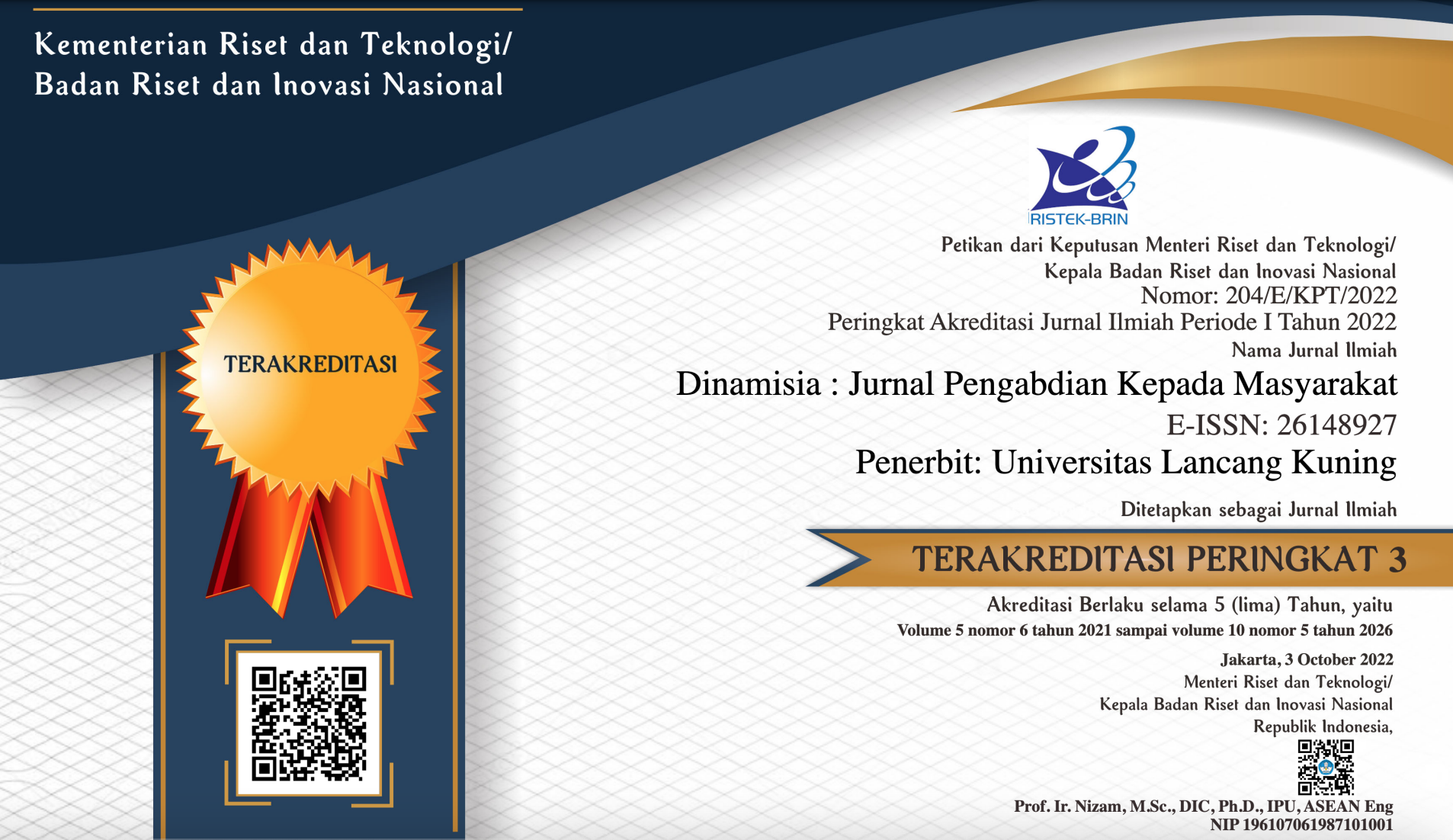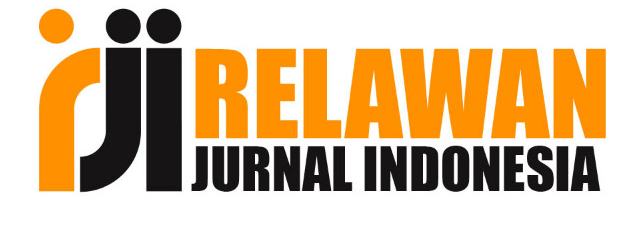Pengenalan English Vocabulary Pada Anak Usia Dini Melalui English For Kids
Abstract
Given the English vocabulary instructional method used by teachers of PAUD Qurrotul Uyun Pamekasan is not groundbreaking and varied since they constantly teach the English vocabulary from the textbook, additionally they never employ a modern technology tool such as smartphone gadget. Despite the fact that they frequently bring the gadget when the teaching learning porcoses in the class is occurring. In view of that the learning atmosphere becomes unappealing, the pupils becomes passive and dependent learners. Hence the aim of community service activity is to give pupils of PAUD Qurrotul Uyun Pamekasan training regarding English vocabulary learning employing English For Kids application. Method used in this community service is training by utilizing steps with activity theoretically and practically. The results are to be able to enhance pupils’ leaning motivation, to be able to lessen pupils’ boredom while learning, as well as to be able to create pulpils become autonomous pupils.
Downloads
References
Anyaegbu, R., Wei , T., & Yi, L. (2012). Serious game motivation in an EFL classroom in Chinese primary school.Turkish Online Journal of Educational Technology, 11 (1), 154 - 164.
Bekleyen, N. (2011). Can I teach English to children? Turkish preservice teacher candidates and very young learners. Journal of Early Childhood Teacher Education, 32, 256-265.
Billings, E., & Mathison, C. (2011). I get to use an iPod in school? Using technology-based advance organizers to support the academic success of English Learners. Journal of Science Education Technology, 21(4), 494-503.
Brand, S., Favazza, A. E., & Dalton, E. M. (2012). Universal design for learning: A blueprint or success for all learners. Kappa Delta Pi Record , 48 (3), 134 - 139.
Graddol, D. (2006). English next. Retrieved February 10, 2020, from www.britishcouncil.org/files/documents/learning-research-english-next.pdf.
Nunan, D. (2003). The impact of English as a global language on educational policies and practices in the Asia-Pacific region. TESOL Quarterly, 37 (4), 589-613.
Pinter, A., & Zandian, S. (2013). ‘I don’t ever want to leave this room:’ benefits of researching ‘with’ children. ELT Journal, 68, 64-74.
Oktavia, Y., Eka Putra, E., Silalahi, M., (2019). Pembinaan Budaya Literasi Berbasis Android Untuk Kemahiran Bahasa Inggris Dan Kesantunan Berbahasa. DINAMISIA - Jurnal Pengabdian Kepada Masyarakat, 3, 90-100.
Pavlik, J. V. (2015). Fueling a third paradigm of education: The pedagogical implications of digital, social and mobile media. Contemporary Educational Technology, 6(2), 113-125.
Susikaran, R. S. A. (2013). The use of multimedia in English language teaching. Journal of Technology for ELT, 3 (2).



















